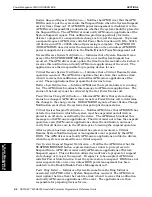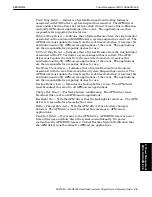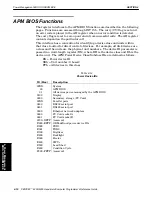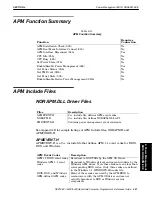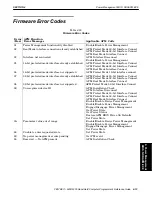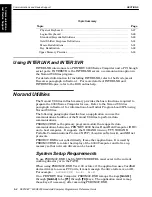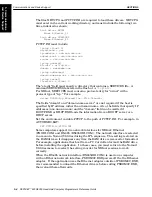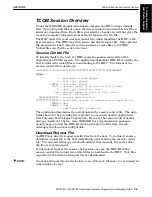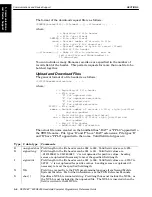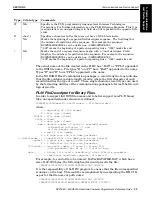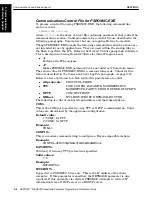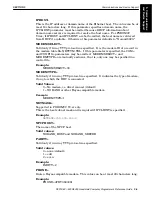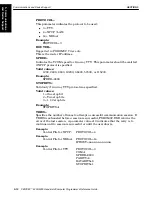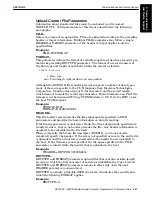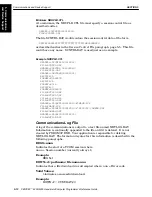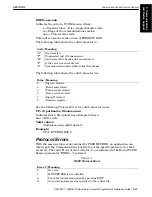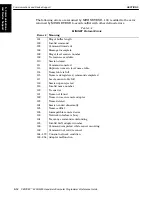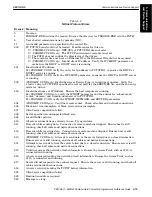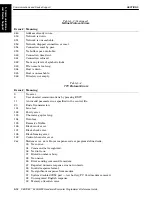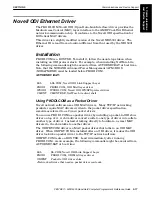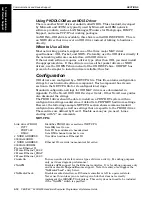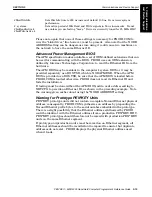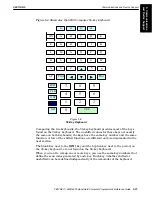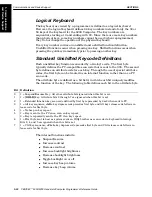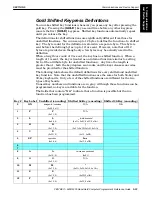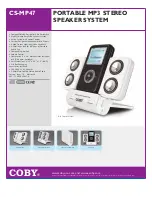
SECTION 5
Communications and Device Support
5-8 PEN*KEY
R
6200/6300 Hand-Held Computer Programmer’s Reference Guide
Communications Control File for PSROM0C.EXE
To process a control file using PSROM0C.EXE, the following command line
syntax is valid.
PSROM0C.EXE ctl-file
where
ctl-file
is the name of a text file containing parameters that control the
communications session. Valid parameters for a control file are described in the
following paragraphs. Parameters that are not applicable may be omitted.
Though PSROM0C.EXE accepts the following command line switches, these are
not intended for use by applications. They are used within the startup files in
the flash to perform the IPL. Refer to the
Norand Utilities
paragraph in Section
1 for a description of using Norand Utilities for initial Program Load.
"
ćI
Performs the IPL sequence.
"
ćP
Makes PSROM0C.EXE permanent (does not allow exit from main menu).
The return value for PSROM0C.EXE is a session status code. Values for this
code are described in the
Communications Log File
paragraph, on page 5Ć12.
Below is a list of protocols to which control file parameters are valid:
"
All protocols:
PROTOCOL, TRIES
"
TTY
:
COM, CONFIG, DATABITS, MODEMSELECT,
MODEMTYPE, PARITY, PHONE, SPEED, STOPBITS
"
NPCP
:
COM, NPCPHOST
"
NRInet
:
IPCLIENT, IPHOST, NETMASK, ROUTER
The following is a list of control file parameters and their descriptions:
COM=
This is the COM port used for twoĆway TTY or NPCP communications. Valid
values are determined by the application configuration.
Default value:
1 (COM1) for TTY
2 (COM2) for NPCP
Example:
COM=3
CONFIG=
This is a modem command string to configure a HayesĆcompatible modem.
Example:
CONFIG=ATE0V0Q0X4&C1&D2&M0&RS0=0
DATABITS=
Valid only if twoĆway TTY protocol was specified.
Valid values:
7, 8
Example:
DATABITS=7
IPCLIENT=
Supported in PSROM0C V3.xx only.
This is the IP address of the client
computer. If this parameter is specified, the NETMASK parameter is also
required. If this parameter is omitted, PSROM0C attempts to retrieve IP
information from a DHCP server or a BOOTP server.
5. Communications
and Device Support

